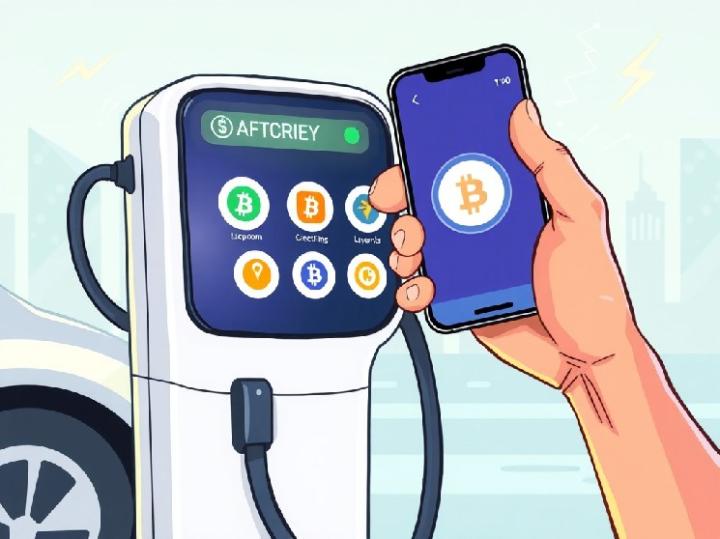
Following the Money is a Q&A series that spotlights how Chainalysis customers use our products in the real world — from compliance teams and investigators to pioneers driving crypto adoption.
Adrian is Associate Director, Insolvency & Asset Recovery at Grant Thornton.
What’s one thing you wish people understood about on-chain analysis?
Probably the fact that you can’t trace through exchanges and that when things hit deposit addresses, the only route forward is disclosure. A lot of people who have watched YouTube videos or try and do tracing using open-source tooling end up not realising that the transactions that they’re following aren’t linked to suspects or individuals that they care about. To equate it to fiat, they’re following the pound notes rather than the proceeds of the crime.
How has your work changed the way you think about money or trust?
What it’s made me understand is that when your money goes into a bank or your crypto goes into an exchange, it’s no longer yours, it’s the bank’s money, it’s the exchange’s money, and effectively they have an IOU on a big ledger to their customers. I think that’s really hit home, and that’s why I understand that in some jurisdictions or where individuals are more susceptible to reaction from the state, alternatives such as self-custody wallets are increasingly popular.
What’s the wildest rabbit hole Chainalysis ever led you down?
It’s probably been getting into the intricacies of crypto and the gaming community – seeing transactions on-chain and then trying to match those to in-game transactions between suspects. When I started in crypto investigations, I never thought I would end up looking at people trading items within a virtual world and linking those directly to crypto payments.
Online gaming relationships go across borders and are cross-jurisdictional, and crypto is the easiest way to move money in that world. As gaming increases in popularity and in scope, we’re only going to see crypto play a larger role in this field.
If you could automate one part of your job, what would it be?
The analysis of disclosure from crypto exchanges, because every single exchange does it differently and it can take hours just figuring out what each exchange means when they’ve sent you different transactions!
Where do you think the biggest gaps are in public/private collaboration and what are you doing to bridge them?
Whilst public-private partnerships have come a long way, they’re still very much transactional in nature or one-way, with the public sector often still being on the receiving end rather than it being a true collaborative partnership. There are, of course, some really strong examples of where that’s not the case, and at Grant Thornton we’re trying to build off those examples. For instance, looking at insolvency in the public sector and the courts using firms like Grant Thornton in order to either manage assets during contentious liquidations or to reimburse creditors, especially when the state is a significant creditor – that is a proven method. What we’re trying to do is build that out so that it doesn’t just apply in the insolvency space, but the economic crime space as well.
Industry events such as Links are also really important for public-private collaboration, for two reasons. The first is getting good news stories out there – there’s been plenty of negative coverage of crypto in the headlines, so events like Links can really counter that and give both the public and private sector the ability to promote positive news stories. Second, these events also provide Chatham House Rule-type environments for conversations to happen, for people to share ideas, for people to discuss common problems. You wouldn’t achieve this without having all these relevant people that know what they’re talking about under one roof.
What’s your go-to karaoke song? (The crypto community is notoriously good at karaoke)
Embarrassingly, it is probably Florence and the Machine’s ‘Dog Days Are Over’, just as long as I’m not doing it by myself.
If you could rename one feature in Chainalysis, what would you call it?
It’s less about Chainalysis, and more of an industry-wide pet peeve – the term stablecoin. They’re only ‘stable’ if they’re in your local currency. If you live within the EU, if you live within the UK, if you live in India, there is nothing stable about the US dollar as it is obviously subject to currency exchange fluctuations. That is why I think it’s a mislabeled term – linked coins would be more accurate.
What do you think the future looks like for government and industry partners in tracking crypto transactions, and how can Chainalysis help make these partnerships stronger?
The fact that Chainalysis is used by the majority in this industry, both public and private, is actually a really important factor because it gives us common terminology, a common background, and a common platform to speak from. Where I see the future going is hopefully even more collaboration. We understand that law enforcement globally doesn’t have the resources to look at every instance where illicit finance and crypto intersect, especially if the suspects or the perpetrators are not immediately identifiable. Whereas within the private sector, there is that ability, and there’s some incredible results to be had. When you look at what the private sector has achieved in the tracing and recovery of funds, that provides a really good template to apply across the illicit finances space as a whole.
This website contains links to third-party sites that are not under the control of Chainalysis, Inc. or its affiliates (collectively “Chainalysis”). Access to such information does not imply association with, endorsement of, approval of, or recommendation by Chainalysis of the site or its operators, and Chainalysis is not responsible for the products, services, or other content hosted therein.
This material is for informational purposes only, and is not intended to provide legal, tax, financial, or investment advice. Recipients should consult their own advisors before making these types of decisions. Chainalysis has no responsibility or liability for any decision made or any other acts or omissions in connection with Recipient’s use of this material.
Chainalysis does not guarantee or warrant the accuracy, completeness, timeliness, suitability or validity of the information in this report and will not be responsible for any claim attributable to errors, omissions, or other inaccuracies of any part of such material.
The post Following the Money with Chainalysis: 8 Questions for Adrian Morris from Grant Thornton appeared first on Chainalysis.








